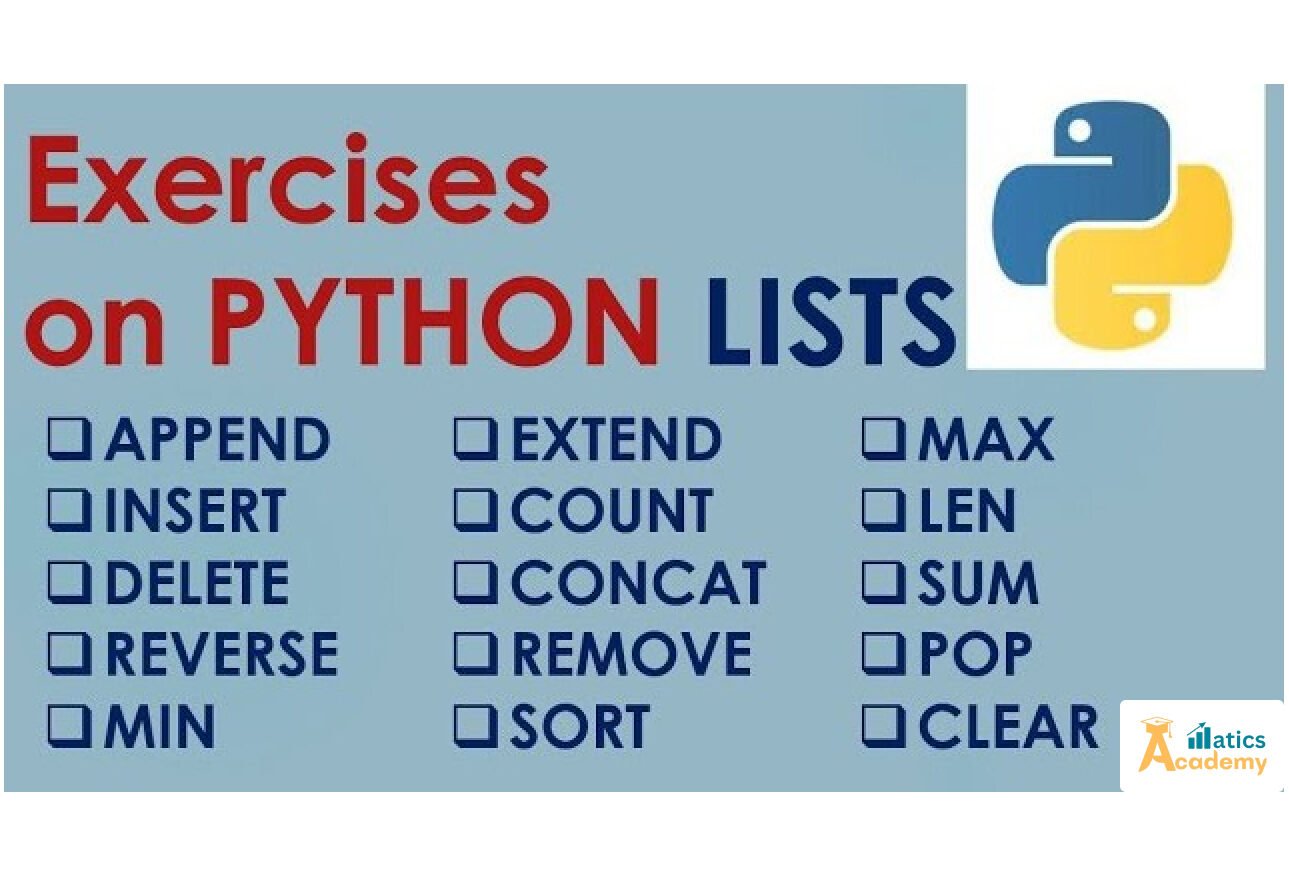Python lists are an essential data structure, allowing you to store and manipulate collections of items efficiently. By solving Python list exercises, you can strengthen your understanding of how lists work in Python. These exercises not only improve your programming skills but also prepare you for real-world scenarios where Python lists are indispensable.
Working through Python list exercises is an excellent way to practice concepts like indexing, slicing, and modifying lists. For beginners, Python list exercises help establish foundational knowledge. Advanced users can explore Python list exercises involving complex operations, ensuring their skills remain sharp.
Whether you’re a novice or an experienced programmer, Python list exercises provide valuable practice opportunities. These exercises cover a broad range of use cases, making Python lists a versatile tool in your programming toolkit.

Beginner-Level Problems
- Create a List
- Problem: Create a list of the first 10 even numbers.
- Hint: Use the
range()function with an appropriate step.
- Access Specific Elements
- Problem: Print the first and last elements of a list.
- Hint: Use indexing and the
len()function.
- Modify a List
- Problem: Replace the third element in a list with the string “Updated”.
- Hint: Use indexing to assign a new value.
- Check Membership
- Problem: Check if the number 5 exists in a list.
- Hint: Use the
inoperator.
- Slice a List
- Problem: Extract the first three elements of a list.
- Hint: Use slicing with
list[:3].
- Reverse a List
- Problem: Reverse a list of strings.
- Hint: Use slicing with
[::-1].
- Concatenate Lists
- Problem: Combine two lists into one.
- Hint: Use the
+operator.
- Duplicate a List
- Problem: Create a new list that duplicates the elements of an existing list.
- Hint: Use the
copy()method or slicing.
- Remove an Element by Index
- Problem: Remove the element at index 2 from a list.
- Hint: Use the
pop()method with the index.
- Clear a List
- Problem: Empty an entire list.
- Hint: Use the
clear()method.
Intermediate-Level Problems
- Sort a List
- Problem: Sort a list of numbers in ascending order.
- Hint: Use the
sort()method or thesorted()function.
- Find Minimum and Maximum
- Problem: Identify the smallest and largest numbers in a list.
- Hint: Use the
min()andmax()functions.
- Count Occurrences
- Problem: Count how many times “apple” appears in a list.
- Hint: Use the
count()method.
- Remove Duplicates
- Problem: Remove duplicates from a list while preserving the order.
- Hint: Use a loop with a set or
dict.fromkeys().
- Find Index of an Element
- Problem: Find the position of “banana” in a list.
- Hint: Use the
index()method.
- Merge Two Sorted Lists
- Problem: Merge two sorted lists into a single sorted list.
- Hint: Use a loop or list comprehension to iterate through both.
- Filter List Elements
- Problem: Create a new list containing only numbers greater than 10 from a given list.
- Hint: Use list comprehension with a conditional statement.
- Nested Lists
- Problem: Access the second element of the first sublist in a nested list.
- Hint: Use double indexing (e.g.,
list[0][1]).
- Sum of Elements
- Problem: Calculate the sum of all numbers in a list.
- Hint: Use the
sum()function.
- Find Intersection
- Problem: Find the common elements between two lists.
- Hint: Use the
set()intersection method.
Advanced-Level Problems
- Flatten a Nested List
- Problem: Convert a list of lists into a single list.
- Hint: Use nested loops or list comprehension.
- Second Largest Number
- Problem: Find the second largest number in a list.
- Hint: Use sorting or iterate through the list while tracking two largest numbers.
- List Rotation
- Problem: Rotate a list to the right by 2 positions.
- Hint: Use slicing to rearrange elements.
- Find Duplicates
- Problem: Identify all duplicate elements in a list.
- Hint: Use a dictionary to count occurrences or
collections.Counter.
- Group Elements by Frequency
- Problem: Group elements of a list based on their frequency of occurrence.
- Hint: Use a dictionary to store elements as keys and their counts as values.
- Partition a List
- Problem: Partition a list into two lists: one with even numbers and one with odd numbers.
- Hint: Use list comprehension with conditions.
- Cumulative Sum
- Problem: Create a list of cumulative sums from a given list.
- Hint: Use a loop or
itertools.accumulate().
- Find Missing Numbers
- Problem: Given a list of numbers from 1 to 100 with some missing, find the missing numbers.
- Hint: Use
set()operations or loops.
- Pairwise Product
- Problem: Calculate the pairwise product of elements from two lists.
- Hint: Use
zip()and list comprehension.
- Find Unique Elements
- Problem: Find elements that are unique to each of two lists (not in both).
- Hint: Use
set()symmetric difference (^).
Additional Topics:
